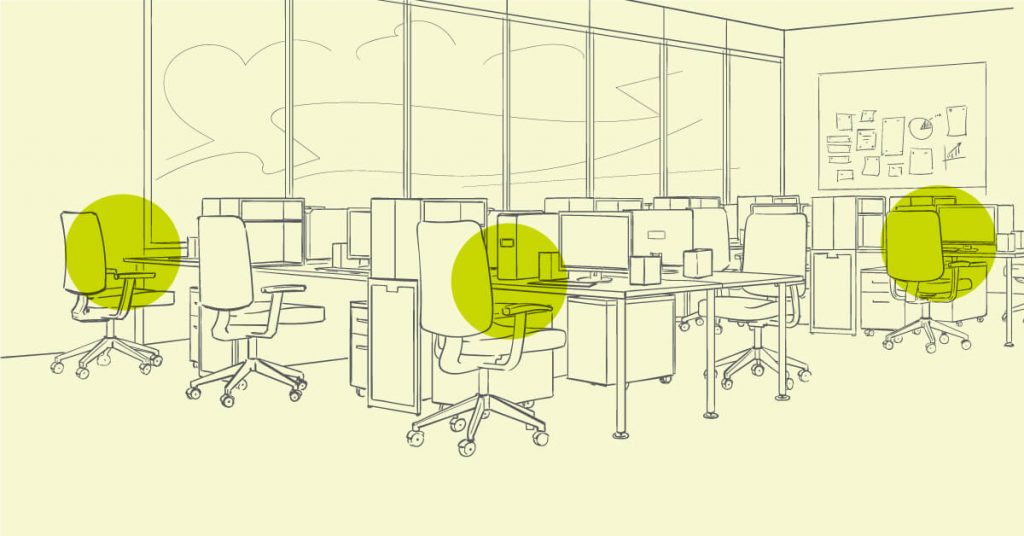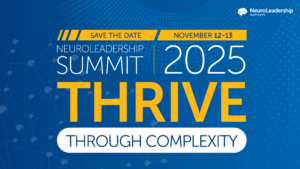Many of the core discussions are over-hyped and misguided
Notable examples:
- Productivity will drop.
- Culture will suffer.
- Innovation will suffer.
- Hybrid work is inherently unfair.
Those four bullets amount to myths about the future of work.
They’re not true, and can be debunked with fact and science.
Productivity actually increased at many companies during the earliest parts of COVID. Why? Different people want different things, so allowing employees to make their own choices (ie. where they work or, as in the study referenced above, how they decorate their cubicle) maximizes their sense of autonomy, which translates into a greater sense of ownership over their work and greater efficiency because people can make the most of their limited time. Put simply, generally we like to feel a sense of control over the work we do. We had horrors in those days, but we had work autonomy, generally.
Managers will need to focus more on the quality of their conversations
This next period, as COVID drags on further and we might be in the middle of a “Great Resignation,” needs to see a managerial uptick in quality conversations. This is not about checking boxes and asking for deadline and task updates. It’s about real conversations with your team on their life, how they’re processing everything, their connection to work, their goals, and their insights about the business overall, no matter how junior or senior their rank is.
Work may be vastly different. You need a growth mindset to help get through that, and manage stress.
The good news: growth mindset can be developed over a short period of time, and you can inspire your team to constantly learn and develop new skills. We talk often these days of “up-skilling” or “re-skilling,” but many of those programs have very low success rates. Instilling a growth mindset in your people over time, through small repeatable actions, is a better approach — and an essential need for managers post-COVID.
Employees and managers alike can grow through quality conversations. Try opening a dialogue with a direct report by discussing where they see their career in three years, or bounce some executive-level strategy off them and get their take. If you have a mix of in-person and virtual, adopt a “one virtual, all virtual” rule which means no people can be together, even if they’re in the same office. It cuts down on exclusion, clique-y behavior, side conversations, etc. and helps to make the at-home people (the virtual ones) feel less left out. Work on having quality meetings as well: memos to open and parallel processing review (everyone works on the same document for 10 minutes, then comes back to discuss it). Quality conversations and meetings help teams grow.
If you are interested in increasing vaccinated employees, follow the science
There’s a long history of behavioral science research on how to get people to take an action, and it points to one big idea: When it’s easier to get vaccinated than not to, we will see a surge. We probably won’t get to 100 percent – people’s belief structures are incredibly powerful, and the politics involved has been intense – but we can probably get over 80%, or even 90%, which would mean the difference in whether or not we achieve herd immunity.
Start with rapid, easy vaccination stations in office lobbies everywhere. Then add this rule: if you have no vaccine, and don’t have a medical reason why not, then a few times a week you need to get to work earlier for daily rapid testing, plus filling out a questionnaire, all of which together will take 30 minutes. Who wants to spend 30 additional minutes per in-office day vs. getting a single five-minute shot?
Then to top it off, be sure to give people automatic time off as a reward for getting vaccinated, in case they do experience side effects. Again, make it easy to get vaccinated, and harder not to. It’s long been said that people tend to do what’s easy, not what’s right. So let’s make it really easy to do what’s right.
Managers need to think like first responders, and de-escalate tough situations
Take this elevator scenario as an example of how you can assess and label threat level, then actively de-escalate… Imagine you’re in an elevator with two strangers. As the doors are closing, a man runs toward it, yelling, “I’m late! Hold up!” and breaks the handle of his briefcase as he uses it to catch the doors. Immediately angry, he projects his aggression onto the person next to the buttons. “First time in an elevator and confused by all the buttons? That one opens the doors. Try it sometime. This is a very expensive briefcase and it’s ruined. Thanks for nothing, jerk!”
You immediately recognize the man is at a Level 3 Threat and at that point, you watch the shoulders raise and chest rise of the person he’s yelling at. You sense that he was highly offended at being accused of being stupid. His body language puts him at a level 2.
Recognizing the briefcase man was bothered by the monetary impact, you quickly shift your attention and say, “What a shame, that really is a stunning briefcase. I know a repair shop near here if you’re interested?”
He immediately looks down at it, relaxes his face, and exhales. “That’s very kind. I’ve had this since grad school and honestly it’s probably not even worth fixing.” He continues with a chuckle, “My wife’s been threatening to throw it out and buy me a new one for years!”
Now imagine the same scenario where someone in the elevator just responded with “Hey buddy, just calm down, that briefcase looks near the end of its life anyway.” The first and most critical step was to recognize and label the level of threat. Then, we can see how de-escalating the situation was a matter of moving the threat level down a notch.
If it worked this well with strangers, imagine how easy it can be to reduce conflict in a conference room when someone isn’t feeling heard, or in performance feedback when someone isn’t feeling recognized for their work.
De-escalation is a highly trainable skill, and it’s clear that managers will need it in 2021 and beyond. In pilot training programs with law enforcement agencies, we’ve seen the tremendous impact of educating people on levels of threat. One officer explained, “Now that I know [the science], it makes a lot more sense when I’m dealing with people, and how to proceed with those calls … to de-escalate that situation.”
We think it’s time to expand the conception and application of de-escalation beyond law enforcement to the rest of the humans interacting with humans on a daily basis. You could easily argue it’s one of the most essential managerial skills of 2021, 2022, and beyond.
Leaders need to remember that “tiki bar conference rooms” are NOT culture
A big argument against hybrid approaches and WFH approaches is that without people together in the same building with cool amenities and nap pods, culture will die. That’s actually not true. Culture can thrive.
How is all this happening if people are not sitting across from each other? Well, the more closely you are watching someone’s face, the more you are registering their emotional response to events, and you begin to read what is good and bad. Research also shows we learn the habits which make up “culture” mostly unconsciously, and we learn them through observation and mimicry.
Some loose math of relevance here: if you measure the number of hours a week people used to spend looking closely at colleagues’ faces, it might have been say 3 hours a day x 4 people x 5 days = 60 people hours a week.
Now in a world full of back-to-back video calls, it’s 8 hours a day x 10 people x 5 days = 400 people hours a week. In short, in a work from home world, we’re watching other people’s reactions up to 5-7 times more a week than we used to. So the culture is staying stable, and if anything, it is being shared faster.
At the same time, all this attention to other people’s faces is one of the reasons for the “zoomxaustion” (Zoom fatigue) that people feel. The brain is being taxed by watching far more people’s faces up close than ever before, as well as from an awareness that dozens of others are watching us closely all day.
But all that focus on facial cues is creating non-obvious upsides for culture. Not only is the culture not the building, but in a world where people spend a lot of time meeting on digital platforms, the culture is more inclusive, more robust, and more consistent globally.
Biases will prevent some leaders from embracing a new world of work
Specifically — expediency bias, safety bias, and, frankly, the need for power and control. When NLI started this approach to work, around early 2017, some managers ended up leaving. A departure is not always a bad thing. Culture norms shift, and people’s preferred ways of working shift. If managers are behind the times, it’s OK for them to be part of “The Great Resignation” as well.
There is a lesson to hiring here as well: you can now, within reason and job scope, get the best person anywhere and not the best person within 45 minutes of your central HQ. That’s a huge advantage. If the personalization coder you need is in Denver, and your HQ is in New York, five-10 years ago you might have had trouble getting him/her because of how management was thinking about talent. 2020 opened eyes. Now you can get a much larger pool of “best people.” Embrace that.
It’s finally time to run better virtual meetings (please)
More pre-work for meetings: Have the owner of the meeting create a memo or document explaining the purpose of the meeting and the goals/action items. Make it a shared document so that people can leave thoughts beforehand, and then address those thoughts in the back-half of the actual meeting. It’ll remind people, Oh hey, Kathy is in this meeting, and help minimize their bias. Not to mention, when people are prepared, the quality of the meeting is better.
“Farthest Person First:” Ask for feedback on the point of the meeting and goals from the farthest person (away from HQ/core) first. Any other initial weigh-ins or opinion solicitations can be done in reverse mileage from HQ, to avoid distance bias. When you return to in-office or hybrid, keep this model going.
For the in-person participants, use a white board to list who is on the phone/video component of the call: Sounds basic, and it is, but you’ve definitely sat in meetings and thought 35 minutes in, “Oh, Craig is on this call?”
One virtual, all virtual: We will have a longer piece on this coming soon, but the basic idea sounds awful, but works well. If some people come into the office, they don’t join meetings together, in the same room. Everyone finds a spot and joins via their laptop. It cuts down on side conversations and make people in their homes and WeWorks feel more included.
Roll with us: We have solutions on mitigating bias and creating more collaborative, creative, connected teams. Both go directly into helping people feel more included and valued, both traits to foster in the new hybrid work model.






